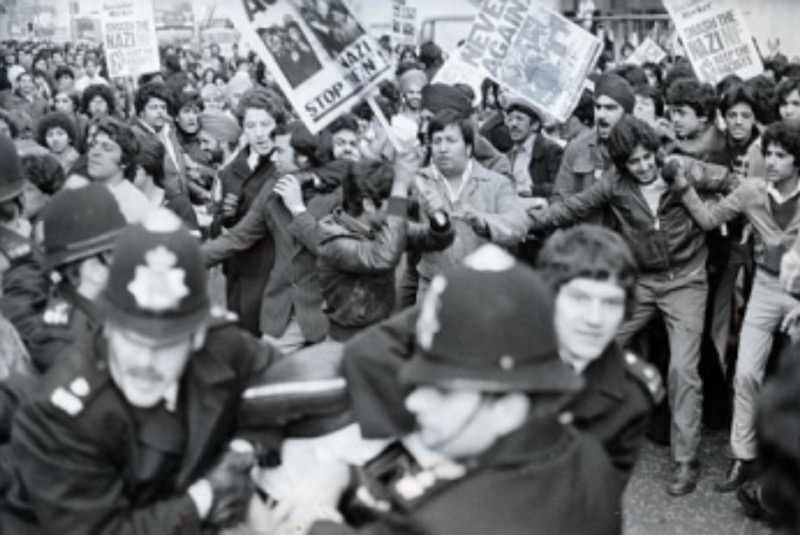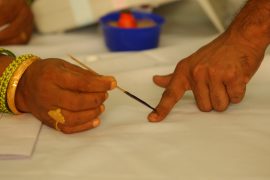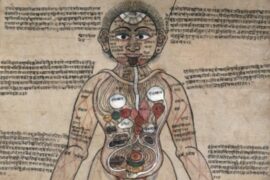London’s Southall, which goes by the moniker “Chhota Punjab,” was the centre of the Sikh community from the 1960s. Around 70 per cent of its inhabitants were Punjabi immigrants from India. At the time, there was a common saying among the community about why Southall was only three miles away from the airport:
If the gooras [whites] ever kicked [them] out, it would be easy to get on a plane and return home.
It may seem like a ‘light-hearted joke,’ but, in reality, the so-called ‘joke’ reflects how immigrants were treated in Britain. At the time, as now, immigrants were unwelcome. Many of them were treated with contempt—verbally abused, spat at, and, in some instances, physically harmed.
Britain took in immigrants, not out of some moral high ground but because it needed skilled and unskilled workers to protect its economic interests. Yet, its immigration policies were deemed racist, which included maintaining strong ties with the government of apartheid South Africa.
To share their concerns about racism in Britain, Indian Workers formed the Indian Workers Association (IWA), which eventually helped members of the Asian community voice their opinions. However, the local authorities or the national government did not consider petitions and complaints from the people of Southall. And by 1976, the youth became resentful of the reluctance to confront racial discrimination.
In June 1976, an eighteen-year-old boy named Gurdip Singh Chaggar was murdered by racist thugs in Southall. When a young man named Suresh Grover, then twenty-two years old, saw the pavement pooling with blood, he asked the policeman who stood by the scene what had happened. In response, the policeman dismissively said: “it was just an Asian.”
Angry with Chaggar’s murder, hundreds of Indian youth took to the streets to protest against racism. It was the first time young Indian people had stood up in such numbers against racial discrimination; many remember it as the “first uprising.” “The older generation were totally bewildered and fearful of what we were capable of. They were really frightened of what the police would do to us,” remembered Grover.
Commenting on Chaggar’s death, John Kingsley Reid, former chairman of the National Front (NF) party, said: “One down, a million to go.” Notorious for demonstrating its racist propaganda, the National Front, which received the support of conservative local authorities, organised flag marches to provoke the Sikhs in Southall. At the time, it was widely believed the NF did all the dirty spadework for them.
With great division in Britain’s politics, the National Front campaigned to deport Asians and Black people to “raze Southall to the ground and preserve it as a typical English hamlet.”
The National Front Party announced a meeting at the town hall on 23 April 1979. Over ten thousand residents raised a petition to cancel the meeting. However, it was ignored—a disrespect to Chaggar’s memory.
A day before, the Sikhs led a march from Southall town hall to Ealing town hall— about 1200 police were deployed, and 19 people were arrested. There was no note of violence during this march. The police have been called “patient” for “only” arresting 19 people in the march that “stopped when the demonstrators sat down in the road.”
The next day, the National Front meeting was scheduled for 7:30. Police officers began policing the area at 11:30 AM, and the protest started with a small group at 1 PM. The police had already arrested two or three people in the first hour. The police report claimed that the protestors were “militant,” and the police used more force to contain the protestors in the next hour. The crowd grew angrier and began reacting to the police.
Violence had broken out; police were chasing protestors with truncheons, and as per police reports, the protestors were throwing missiles, hand-made bombs, bottles, and bricks. However, the police force was criticised for using strongarm tactics and violent force against the protest that was initially peaceful.
The force deployed to counter the protest that day comprised 2,876 police officers. The Special Patrol Group (SPG), a specialised force of Metropolitan Police notorious for violent intervention, had joined to suppress the protest. And when the SPG started using their tactics, “people were running every which way because they didn’t expect this; women, children, even pregnant mothers. People ran into the park and even ended up climbing trees,” remembered Jain, founder of the National Association of Asian Youth (NAAY) was providing shelter to the protestors fleeing the police.
In all this chaos, a special needs teacher from New Zealand, Clementine Blair Peach, who was trying to get away from the violent protest, became a victim of police violence. He took several blows from the police club and suffered severe head injuries to which he later succumbed. The local people guarded Peach’s body until the chaos subsided, and he was carried to the Dominion Centre, half a mile from where he was attacked.
The murder of Peach elevated a local issue to a national story and met with a public outcry. The Special Patrol Group was blamed for his death, but no one was charged, which led to a long period of anger and frustration among the Sikhs. The jury declared that it was death by misadventure. Blair Peach’s death became a symbol of racism and violence that shared the identity with the policing system. His death also became a benchmark in activism against racism in Britain.
“The significance of 1976 [Chaggar’s death] and 1979 [Peach’s death] is extremely important because Southall was one area where the Asian community was settled in large numbers, and right-wing groups were deliberately intent on provoking a reaction, and that reaction came in a very strong way, in response, to the death of Blair Peach and it also drew a red line – we won’t take this.”
The Southall protests started a bigger political debate that demanded equality for Britain’s immigrant minorities. It ensued a process of reflection over the entire nation that would bring about reforms through the Race Relation Act.
Chaggar and Peach were victims of what we see even today: violent racism. Events from history are a reminder that racism exists in many forms, often dressed with the biases and policies that make minorities their victims.
-30-
Copyright©Madras Courier, All Rights Reserved. You may share using our article tools. Please don't cut articles from madrascourier.com and redistribute by email, post to the web, mobile phone or social media.Please send in your feed back and comments to [email protected]











